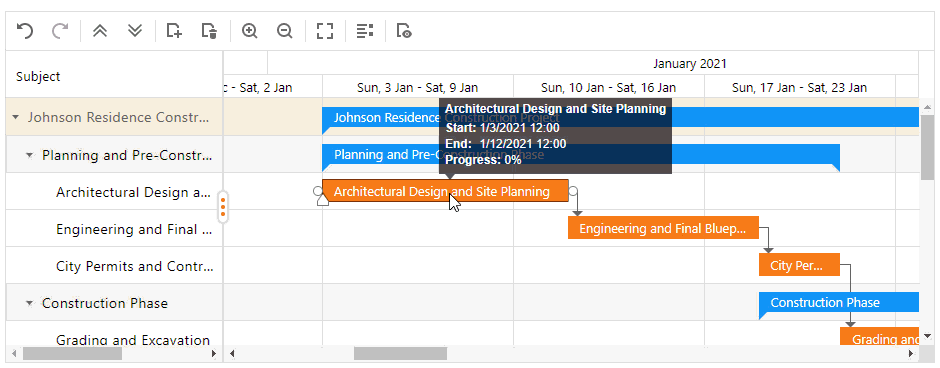GanttValidationSettings.EnablePredecessorGap Property
Specifies whether users can move or resize a predecessor to change a gap before a successor according to the dependency rules.
Namespace: DevExpress.Web.ASPxGantt
Assembly: DevExpress.Web.ASPxGantt.v25.2.dll
Declaration
Property Value
| Type | Default | Description |
|---|---|---|
| Boolean | false |
|
Property Paths
You can access this nested property as listed below:
| Library | Object Type | Path to EnablePredecessorGap |
|---|---|---|
| ASP.NET MVC Extensions | GanttSettings |
|
| ASP.NET Web Forms Controls | ASPxGantt |
|
Remarks
According to the dependency rules, the Gantt control allows users to change the gap between tasks only if they move/resize a successor task. Note that users can use only a successor to create the gap between tasks.
The following image illustrates that the Gantt does not resize the gap between tasks when users move the predecessor:

The EnablePredecessorGap property allows users to increase/decrease the gap between the tasks with a predecessor. The Gantt control validates these changes and shifts the successor task to comply with the dependency rules if they are violated.

<dx:ASPxGantt ID="Gantt" runat="server" ClientInstanceName="clientGantt" EnableViewState="false" ...>
<SettingsValidation EnableDependencyValidation="true" EnablePredecessorGap="true" />
<!--...-->
</dx:ASPxGantt>
Note
The EnablePredecessorGap property is in effect if the EnableDependencyValidation property is set to true.